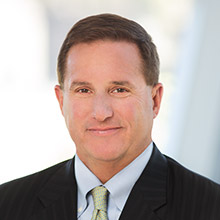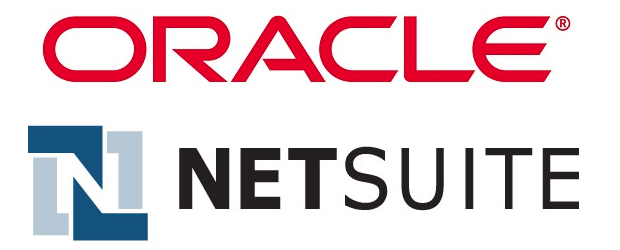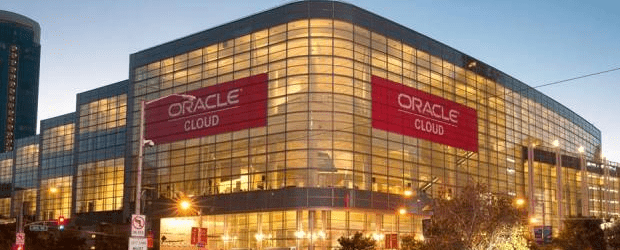SAN FRANCISCO – There’s a feeling of déjà vu permeating the keynotes at this year’s Oracle OpenWorld — the company continues to tout achievements in porting on-premise applications to the cloud, and frequently references Amazon Web Services as the competitor to beat.
Following Sunday’s kickoff keynote by CTO Larry Ellison, co-CEO Mark Hurd’s presentation differed slightly from last year in that he took a faux talk show approach and started out seated behind a desk with a less formal style that included live customer interviews.
Hurd began by painting a landscape using GDP numbers, emphasizing that China was a growth market in a world where global GDP totals US$75 trillion, while Brazil and Russia are finding themselves in recession. Global economic realities are an important backdrop for IT, he said, and while S&P 500 company revenue growth last year was only pegged at one per cent, earnings growth came in at five per cent as those organizations were able to cut expenses in part through deployment of technology: “It’s hard to grow revenue.”
More significant is that in order for CEOs to boost revenue streams, it’s necessary to take market share from competitors while meeting the impatient expectations of competitors. Hurd said getting to know the customer better and aligning business processes based on that knowledge, combined with improving productivity and reducing expenses, is all part of revenue generation.
The challenge, however, is that enterprise IT budgets have been static – growth in spending has basically been zero, said Hurd, while consumer spending on IT has quadrupled in the past decade. The consumer is innovating, he said, while expecting better service than before. Enterprises, however, have very little room for innovation.
It doesn’t help that company boards are more scared than ever about security, said Hurd, which means CIOs are buying a bunch of products to support security and compliance. “Where do think that comes from? These are all incremental pressures on the innovation budget.” Meanwhile, the average age of an application running in an S&P 500 company is 21 years old, he said, running on infrastructure that is five years old.
What Hurd called a “generational shift” to cloud is not going away, and emphasized that even within environment of IT spending, the largest cloud providers, including Oracle and Amazon, are growing 44 per cent. “Remember the 44 per cent is in the zero.” He added that Oracle’s revenue growth within the cloud segment last quarter was 82 per cent.
The argument to move to the cloud hasn’t changed much, however: it still primarily rests on the desire to drive down CAPEX, reduce labour costs and get out the business of building and operating data centres. What has changed for Oracle is that it’s able to better address the mid-market: OpenWorld highlighted smaller, younger customers such as Uber-competitor Lyft and wireless HotSpot provider Boingo. Hurd said the prior to having cloud offerings, Oracle wouldn’t be involved with these smaller organizations as they don’t have any IT staff.
Getting out the data centre business is one of the reasons ClubCorp., which manages more than 200 private and public clubs across the U.S., moved to Oracle. CIO Patrick Benson joined Hurd as one his “talk show” guests, and said that as a company that recently went public after five decades of being privately-held, it sees itself as a “50-year-old startup” that was looking at an IT portfolio that was long in the tooth. “We really wanted to exit the data centre business.”
ClubCorp.’s growth strategy is built around acquisition, said Benson, and that strategy dictates a fast pace. Trying to upgrade its existing applications and infrastructure didn’t make a lot of sense, so it embraced Oracle on three fronts: SaaS, PaaS and IaaS. He said that although ClubCorp. isn’t as big as the typical Oracle customer, it gets the same advantages and opportunities at the big companies, and is also saving money.
“If all cloud did was cost less, and you got exact same thing, everyone would do it,” said Hurd. “That’s not all that happens. You actually get more…. More secure, more reliable, more extensible.” Innovation actually goes up and accelerates. “This isn’t just a technical shift. It’s a technical shift in a different economical model.”
He said the shift won’t be a linear, but exponential. As he did last year, Hurd talked up Oracle’s investment in the cloud and its efforts to rewrite all of its applications for the cloud while maintaining the company’s on-premise footprint. The company is spending 13 per cent of revenue on research and development, and making significant investment into building data centres, describing it as a tough market. “It’s like building a hotel,” he said. “You have to build everything in the hotel before renting one room. It requires lots of capital.”
As much as Oracle seems fixated on Amazon as its primary competitor in the cloud space, Microsoft is making inroads. While it appeared earlier this year that growth of its Azure cloud service had decelerated, in July the Redmond, Wash.-based company said that usage, which grew 102 per cent year-over-year, more than doubled last year, and reported five per cent growth to US $22.6 billion, thanks to its Intelligent Cloud business unit.






